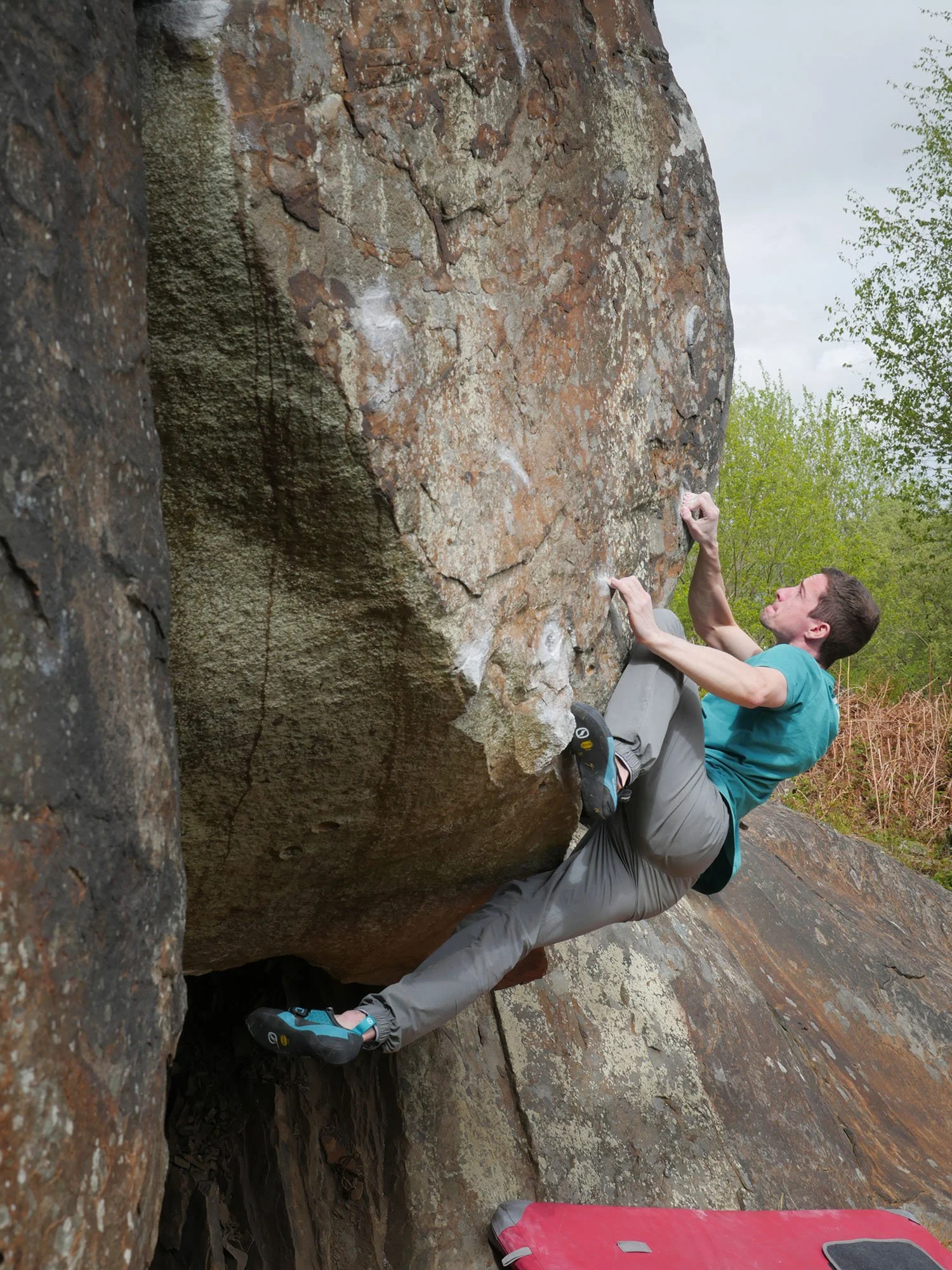Nature as Mentor: Going with the Flow
I would argue it’s pretty common for us to go to a bouldering area with a plan or objective in mind. We’re not just going out climbing with the mindset of “l’ll try whatever I fancy today when I arrive”. We choose a crag for a reason, we choose a boulder for a reason. Many times, we stick with this plan despite Mother Nature giving us a warning not to. We’re often quite stubborn as climbers, and willing to push through in bad conditions or bad weather, especially here in the UK. Fighting the weather and conditions is an uphill struggle in bouldering, and many times produces an experience that needn’t have been so involved and frustrating. So how do we try to work with nature a little more, and not fight it? How do we let the wind or the rain help us, not hinder us? How do we do these things, and facilitate a much more pleasant experience for ourselves?
Ask Mother Nature
Sometimes, a weather forecast is damning, and the only option is the gym. Other times, a forecast is perfect, and we could go outside and climb on almost anything. But at least in the UK, the reality is usually a lot more grey. Pun intended. There can be the chance of dry weather, with some chance of rain. There could be clouds in one area, and sun in another. There could be sea mist at the coast, but clear skies a mile in land. I once drove 4 hours from South Wales to Hartland Quay in Devon, and for 3 hours and 55 minutes of that drive, the weather was dry and mostly clear. In the last 5 minutes of the drive, we entered a cloud of sea mist that had soaked everything under it. The entire area was soaked. Had we gone almost anywhere else we’d have been fine. What we crucially didn’t do, was check the humidity at the area, and this was our demise. Instead of retreating to somewhere dry, we spend the day ‘waiting it out’ and eventually trying to dry out the cave in order to climb. It was one of the least successful sessions I’ve had. We tried to battle the weather, and we lost. What would have made more sense was firstly to check the weather more thoroughly beforehand, but then also to be flexible and adaptable and change our plan!
So the take-home here is to be thorough in finding out what the conditions will be like. Assess wind direction, aspect of the boulder, percentage chance of rain, every single piece of data you can get your hands on, and use that information to educate you and inform your decision of where to climb. We dived into detail on weather in Mastering Stone, so check that out for the full run down and a checklist for weather. But suffice to say, listen to what nature is telling you, and don’t always try to fight it.
Ask Yourself
The next key to going with the flow is to question yourself. Yes you want to do your project, yes you want to get on a particular climb, but there are nearly always other options. Tides are bad, pick an inland crag. The weather is super hot, find a breezy coastal spot out of the sun. Wind gusts of 30mph? Find a sheltered honey trap and enjoy the conditions! Be open and willing to adapt your plan. Not only do you give yourself a more hassle free session which allows you to focus on your practice and enjoying your session, but you upskill yourself in the process, and learn how different conditions affect different areas. Exercising this patience and being willing to adapt a plan is something I’ve seen the best boulderers do time and time again. They’re willing to change course, willing to escape bad weather and come back in future. Yes that’s often as they have the flexibility to, but they are also thinking long term and not allowing themselves to get dragged into a battle they are unlikely to win. The sustainability of that can not be under appreciated!
So in summary, forewarned is forearmed, and knowing as much about the weather as you can will let you work with it, and not against it. Control your impatience and your need to ‘fight through the weather’, to give yourself positive experiences and a sustainable approach to climbing.
But of course, every now and again bust the leaf blower out!
Feel the flow,
Eliot.

